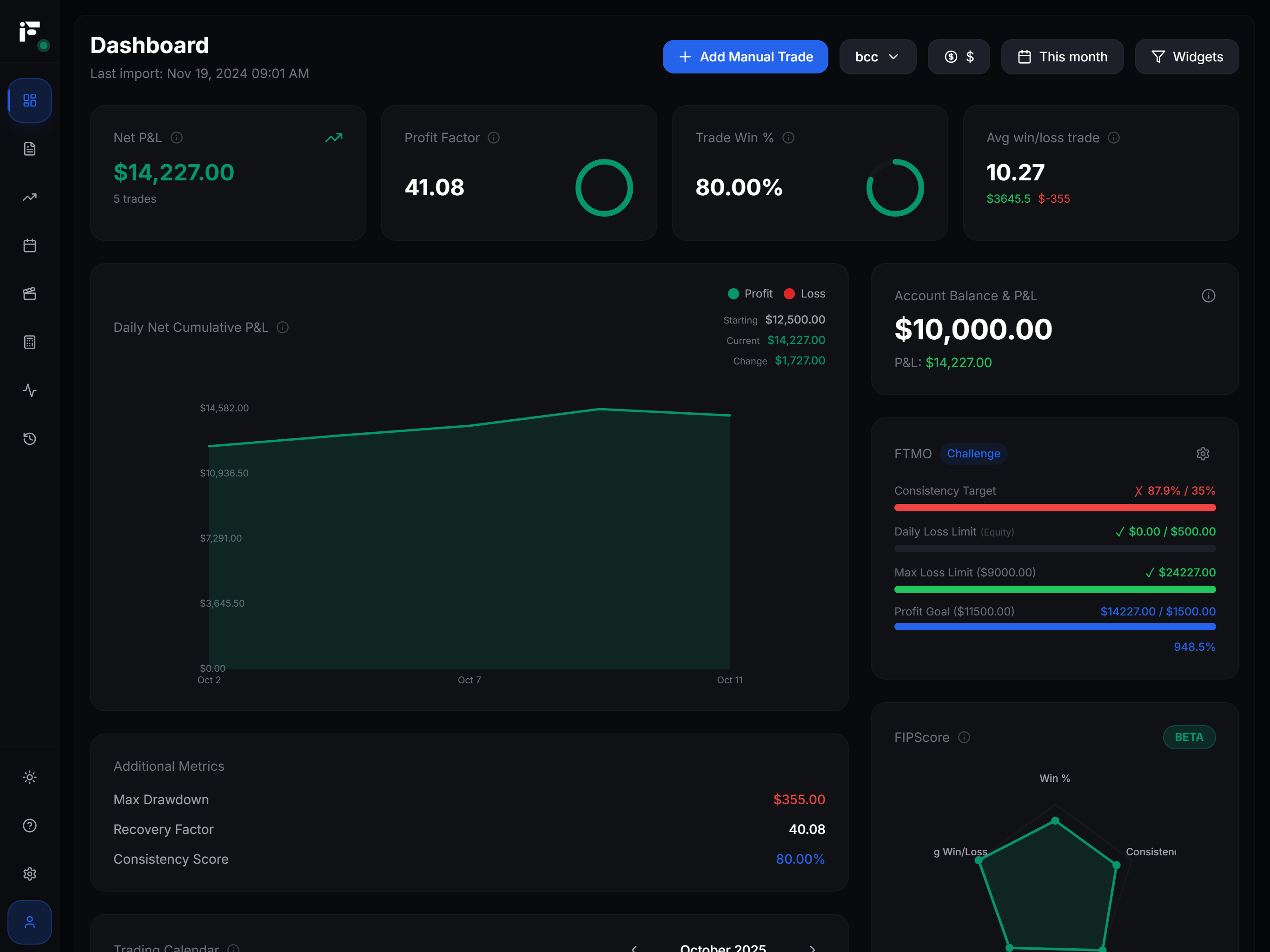How to Use a Trading Journal Effectively
Learn how to track your trades, identify patterns, and improve your trading performance consistently

Why Every Trader Needs a Trading Journal
If you're serious about trading, a trading journal isn't optional—it's essential. Here's why:
- Pattern Recognition: Spot your winning and losing patterns
- Emotional Awareness: Track how emotions affect your decisions
- Performance Tracking: See your progress over time
- Accountability: Keep yourself honest about your strategy
Most traders fail not because they don't know how to trade, but because they repeat the same mistakes. A trading journal helps you break that cycle.
What to Include in Your Trading Journal
1. Trade Details (The Basics)
Every trade entry should include:
- Entry date & time
- Currency pair or asset
- Position type (long/short)
- Entry price
- Exit price
- Stop loss & take profit levels
- Position size (lot size)
- Profit/loss (in dollars and pips)
2. Trade Rationale (The Why)
This is where most traders skip—but it's the most important part:
- Why did you enter this trade?
- What setup did you see?
- What was your analysis?
- Did you follow your strategy?
Example:
"Entered long on EUR/USD after seeing a bullish engulfing candle on the 4H chart. Price bounced off the 1.0850 support level with strong volume. Following my trend-following strategy."
3. Emotional State
Track how you felt during the trade:
- Were you confident or hesitant?
- Did you feel FOMO (fear of missing out)?
- Were you revenge trading after a loss?
- Did you stick to your plan?
Pro Tip: Use a simple 1-5 scale for emotions:
- 1 = Calm and confident
- 3 = Neutral
- 5 = Anxious or emotional
4. Screenshots
A picture is worth a thousand words. Attach:
- Before: Chart screenshot before entry
- During: Mid-trade if you made adjustments
- After: Final chart at exit
How to Analyze Your Trading Journal
Weekly Review
Every Sunday, review your week:
- Calculate win rate: Winning trades / Total trades
- Identify patterns: Which setups worked best?
- Check risk-reward: Are you hitting your targets?
- Review emotions: Did emotions hurt your performance?
Monthly Deep Dive
Once a month, dig deeper:
- Best trading day/time: When are you most profitable?
- Worst pairs: Which assets should you avoid?
- Strategy performance: Is your strategy actually working?
- Rule violations: How often did you break your rules?
Common Mistakes to Avoid
1. Not Journaling Consistently
Problem: You only journal winning trades or skip days.
Solution: Make it a habit. Journal every trade, win or lose.
2. Vague Notes
Problem: "Good setup, took trade" tells you nothing.
Solution: Be specific. "Double bottom on H4, RSI oversold, entered at support retest."
3. No Action Plan
Problem: You review your journal but don't act on insights.
Solution: End each review with 3 action items for next week.
How Fips Makes Journaling Easy
With Fips Trading Journal, you can:
- ✅ Auto-sync trades from MetaTrader
- ✅ Attach multiple screenshots per trade
- ✅ Add custom tags (breakout, reversal, etc.)
- ✅ Get automated performance reviews
- ✅ Export to PDF for monthly reports
No more spreadsheets. No more manual data entry.
Your 30-Day Challenge
Want to see real improvement? Try this:
Week 1-2: Journal every trade with basic details + rationale Week 3: Add emotional tracking Week 4: First full review + action plan
By day 30, you'll have a goldmine of data about your trading psychology and performance.
Next Steps
Ready to start your trading journal?
- Try Fips Free – No credit card required
- Connect your MetaTrader account
- Start tracking today
Remember: The best time to start was yesterday. The second best time is now.
Emre Aktaş
Founder & Developer at Fips. Trader with 7+ years of experience in forex and crypto markets. Building tools to help traders succeed.
